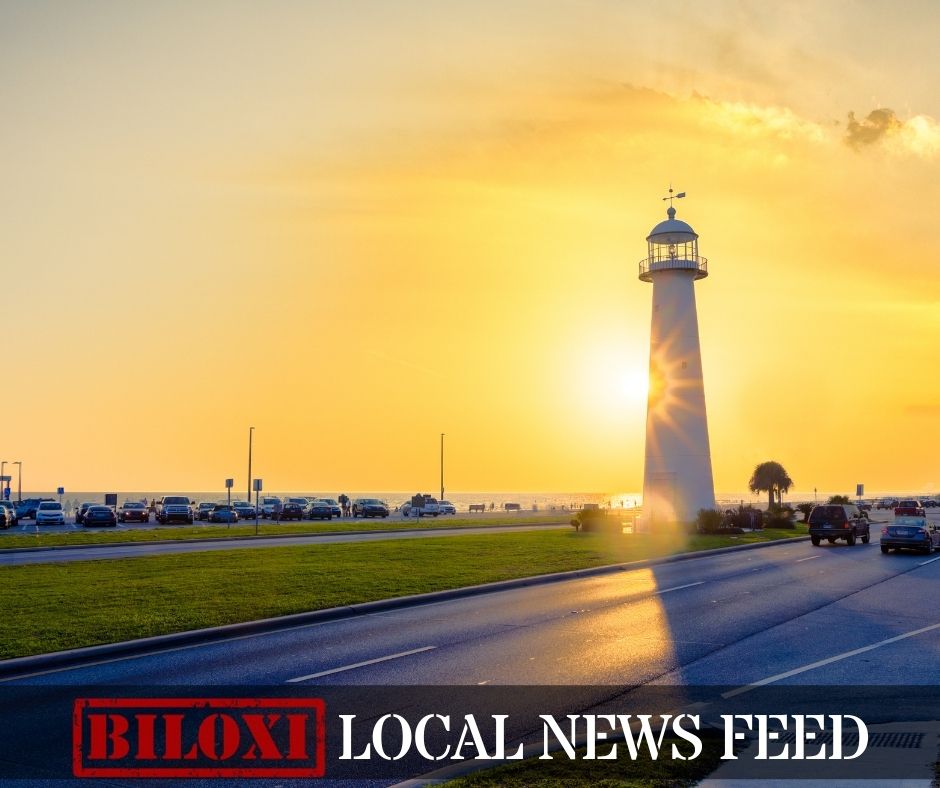News from the South - Louisiana News Feed
The perilous links between Ukraine’s energy future and Louisiana
by Delaney Nolan, Louisiana Illuminator
March 25, 2025
HOSTOMEL, Ukraine – Dr. Olena Yuzvak understands the damage of war like few others.
In February 2022, Yuzvak, her husband Oleh, and their son Dima knew that Russian forces had arrived by the sound of explosions.
“The full invasion started,” recalled Yuzvak, speaking from a quiet, sunlit room in one of her medical clinics. “The artillery and mines and helicopters started to destroy everything, and there was no electricity.”
The quiet village in the suburbs of Kyiv was suddenly the front line. Yuzvak, the physician-manager of four health clinics, began treating shrapnel wounds and concussions, making home visits with a commandeered ambulance amid constant gunfire, then treating people from home when that got too risky, relying on a neighbor’s generator for power.
“But we didn’t have medicine,” like insulin, she recalled, partly a result of blackouts.
A month into the invasion, Yuzvak heard screaming from her front yard. She rushed out to find Dima, 25, pleading with Russian soldiers who’d shot her husband twice in the leg. The family was bundled off, bags put over their heads. After two days of interrogation, Olena was freed. Oleh was returned after a month. But Dima is still being held in Russia.
Still, she’s continued her work.
Yuzvak walks outside and points to the clinic’s roof, where solar panels gleam under a dusting of snow. Rebuilt after missile damage, her Hostomel clinic now runs completely on solar from May to October. That kind of reliability, she says, is critical, and has made the facility a pillar for the area, even during wartime blackouts.
“People can come anytime, when there is no electricity or heating, and they can have a tea, warm up, watch TV because we always have electricity,” Yuzvak said.
She’d like to continue the shift to renewable energy sources, as it allows the clinics to be more independent – and thereby more secure. For the rest of the year, they supplement with electricity from the grid, which has been widely damaged by Russian attacks.
Ukraine is hedging its energy security, in part, on Louisiana. In December, as part of a gambit to replace Russia as the gas hub for Europe, Ukraine received its first shipment of liquefied natural gas (LNG) from the United States. Exported from a Venture Global terminal in Plaquemines Parish, it’ll be held in Ukraine’s gas storage tanks – the largest in Europe – before being piped around the region.
The Trump administration has framed LNG as a win, part of an “energy dominance” plan that will provide security for Europe amid sanctions on Russian gas. Since the invasion, the European Union has banned imports of Russian coal and nearly all Russian oil and pipeline gas.
But some energy and national security experts in the U.S. and Ukraine suggest that embracing LNG will primarily benefit the industry, pose security concerns for Ukraine, raise U.S. energy prices and threaten the health of the Gulf of Mexico.
Ukraine turns to Louisiana for LNG
Ukraine’s largest private energy company, DTEK, has agreed to buy LNG from Venture Global through the end of 2026. Earlier this month, Trump administration officials visited the company’s Plaquemines export terminal and stood alongside Venture Global CEO Mike Sabel as they announced plans to make it the largest one in the country.
The rapid LNG buildout on the Gulf Coast accelerated after Russia’s 2022 invasion of Ukraine, as European countries panicked over gas shortages and scrambled to increase imports of U.S. gas. Though the much-feared shortages never materialized, the war still wound up being a boon to the industry.
“American LNG has created a lot of security of supply, both for Ukraine and Europe in general,” said James O’Brien, head of LNG at DTrading, the international trading arm of DTEK.
O’Brien added that much depends on what happens at the war’s end, but most likely “there will be more increased reliance on American [LNG] and maybe some other sources. But the really fast ramp-up of U.S. LNG production over the last eight, nine years has been quite amazing.”
The bulk of that ramp-up has come from Louisiana, now the biggest LNG exporter in the country. That’s helped make Venture Global a darling of the Trump administration. When his Energy and Interior secretaries visited the Plaquemines terminal last week, they gave speeches praising the company.
GET THE MORNING HEADLINES.
O’Brien likewise said an end to the war “could be amazing potential for American companies in Ukraine.” If Trump wants to balance trade deficits, “LNG is a quick, easy win for him” as “Ukraine is like a new market ready to be opened up, and it could be one of the biggest economic success stories of our time.”
But DTEK picked a beleaguered partner when it signed with Venture Global in June 2024. The company is embroiled in lawsuits with multiple clients, including BP and Shell, over unfulfilled contracts. Two environmental organizations also recently filed a 60-day notice of intent to sue over Clean Air Act violations at a Cameron Parish terminal.
Last month, the CEO of TotalEnergies, a French petroleum corporation, declined to take LNG from the Plaquemines terminal, citing a lack of trust.
“I don’t want to deal with these guys,” Patrick Pouyanne told Reuters.
That turmoil has contributed to a class action lawsuit brewing against Venture Global by its own investors.
And amid it all, Venture Global share prices have “cratered,” losing about 50% of their value since going public in January.
LNG in Louisiana communities
Louisiana shrimpers and fishers have, for years, protested and litigated against Venture Global, which has five LNG projects planned in the state. They argue its terminals damage fishing grounds, destroying their livelihoods. Nearby residents complain of the pollution and erosion the Plaquemines terminal causes, while the company receives billions in state tax breaks. Locals have reported an increase in already-high levels of illnesses among adults and children, including cancer and unexplained rashes.
Regardless, on Wednesday, Trump’s Department of Energy authorized exports from Venture Global’s CP2 terminal in Cameron Parish, which has contracted 10% of its supply to Ukraine.
DTEK says Venture Global has been a reliable partner. When asked about adverse impacts to Louisiana, O’Brien said they fall under Venture Global’s purview.
“They’re the ones responsible for that. This is something they should be looking after,” he said.
But Henry McAnespy, a retired fisherman and Lake Hermitage resident, warns the Plaquemines terminal near his home does not seem to be responsibly run.
“We’ve been concerned about the flaring – a lot of black smoke and a kind of reddish fire at times,” McAnespy said.
He said the plant flares every day, all day – even though Venture Global told the Federal Energy Regulatory Commission in its environmental impact statement that flaring at that terminal “may occur up to forty times a year. Venture Global does not anticipate any other flaring/venting during normal operating conditions.” He added that he hears constant alarms from the plant, which sound for hours, sometimes waking him up at night.
The pattern of excessive flaring McAnespy reports witnessing mirrors the near-daily flaring documented in the pending lawsuit against Venture Global’s Cameron Parish terminal.
Fossil fuels are ‘always going to be vulnerable’
So far, American LNG has not succeeded in displacing Russian LNG, which isn’t sanctioned like piped gas. Russian LNG supplies to Europe have actually increased since the start of the full-scale invasion in 2022.
LNG imports can also present national security risks according to Mike Wallin, CEO of the American Security Project, a nonpartisan think tank.
“Generally speaking, fossil fuels are always going to be vulnerable,” Wallin told the Louisiana Illuminator.
Because fossil fuels are sold on the global marketplace, conflicts, wars or economic shifts in any one region can cause price shocks or supply shortages. Ukraine President Volodymyr Zelenskyy has also suggested Trump’s proposal to mine rare earth minerals in his country would allow Ukraine to build LNG import terminals, but these facilities on the Black Sea would be vulnerable to Russian attacks, Wallin said.
YOU MAKE OUR WORK POSSIBLE.
Renewable energy, on the other hand, tends to be more secure, because it’s “much more centralized, because it’s in your own country. You’re not depending on outside resources,” he said.
Wallin added that as Russia’s been attacking infrastructure, the Ukrainian energy industries have been looking into and building renewables for resiliency.
“It’s easier to stand up a windmill, or solar panels wired up to some houses, than it is to build an entire gas-burning power plant,” he said.
Some Ukrainians echo that viewpoint.
“Fossil fuel companies and their political allies in the United States have capitalized on the horrific war we are experiencing in Ukraine to justify” LNG exports, said Svitlana Romanko, founder of Razom We Stand, an organization calling for a permanent embargo on Russian fossil fuels.
Fossil fuels are “fueling global energy insecurity and autocrats’ expansion. In Ukraine, we don’t want more LNG. We need decentralized renewable energy sources,” Romanko said.
DTEK itself states that “Russia has used energy as a geopolitical weapon” and “by creating a strong, decentralized and low-carbon energy system, Ukraine can limit its exposure to Russian aggression.”
The nation has faced constant attacks on its conventional power plants, and Russia currently occupies Zaporizhzhia, home to the largest nuclear power plant in the world.
“Things like microgrids can help in the resilience of their energy network,” Wallin said. “And I think they’ve been forced to learn this rather quickly.”
Renewables could make Ukraine a ‘green powerhouse’
Three years of Russian attacks have already spurred a buildout of renewable-powered microgrids for critical infrastructure in Ukraine, such as schools, water utilities – and Yuzvak’s clinic.
“We are 100% independent,” said Yuzvak, pointing to the glinting solar panels on the roof of the rebuilt clinic in Hostomel.
Fences in this neighborhood are still riddled by bullet holes. The shell of a bombed house looms behind the nearby Mushchyn clinic. But both are solid and gleaming and – with the help of Greenpeace and EcoAction, a Ukrainian renewables advocacy organization – boast solar panels, battery packs and heat pumps. Even amid a blackout, they’ll no longer need to find fuel for generators, which was difficult and expensive.
EcoAction has established 15 other sites in Ukraine with renewable microgrids. The challenge is scaling up.
DTEK recently announced plans to quadruple the size of its wind farm near the Black Sea. It’s the single largest private investment in Ukraine since Russia launched its invasion in 2022. At that size, it would produce enough electricity for 900,000 Ukrainian homes.
The shift to renewables helps shield Yuzvak’s clinic from another source of instability: the Trump administration.
Even as donated Tesla batteries help power the clinic, much of the Ukrainian health system relies on funding from the U.S. Agency for International Development (USAID). Since Elon Musk dismantled the agency, Yuzvak and her colleagues, whose salaries came from Ukraine’s USAID-reliant Ministry of Health, have struggled.
“We don’t even have enough to pay the employees’ salary,” she explained. The hospital has had to lower its budget and change what they charge patients as a result.
But being energy independent helps ease some of the clinic’s financial pressure. It has reduced its heating costs by 80%, according to EcoAction.
“We’d like to have a solar plant,” Yuzvak said. “We have projects, but we don’t have the finances.” She and other health care providers planned to construct a fifth hospital with solar panels, but the project was dependent on USAID funding. Now its future is uncertain, like so much else in Yuzvak’s life.
Yuzak said she sometimes gets information about her son from freed POWs. She knows where Dima is, and that he is in poor health. But she didn’t disclose the prison where he’s being held, “because then they’ll transfer him to another one, and during this transportation, they get beaten and tortured again,” she said, her voice strained.
Meanwhile, any goodwill created by the donated Tesla batteries has evaporated.
“We didn’t even need these toys that Musk and USAID are bringing us. We had enough electricity before,” Yuzvak said. “Now, my son being in captivity is the result [of U.S. policy] because we are just instruments in this war.”
“The mood is changing in the speech of the politicians,” she added. “But after what we went through, what we survived – nothing can make us silent.”
This reporting was supported by the International Women’s Media Foundation’s Women on the Ground: Reporting from Ukraine’s Unseen Frontlines Initiative in partnership with the Howard G. Buffett Foundation.
Louisiana Illuminator is part of States Newsroom, a nonprofit news network supported by grants and a coalition of donors as a 501c(3) public charity. Louisiana Illuminator maintains editorial independence. Contact Editor Greg LaRose for questions: info@lailluminator.com.
The post The perilous links between Ukraine’s energy future and Louisiana appeared first on lailluminator.com
News from the South - Louisiana News Feed
Saturday 10 PM Tropics Update: One far-off tropical wave to watch
SUMMARY: A tropical wave near Africa is emerging over the Atlantic but remains disorganized. The National Hurricane Center gives it a 60% chance to develop into a depression or tropical storm, possibly becoming Gabrielle. This system may move northward, staying over the open Atlantic and away from the Gulf, posing no immediate threat. Since the last named storm in late August, stable air, dry conditions, and increased wind shear have suppressed tropical activity in the Atlantic. The next storm names are Gabrielle, Humberto, and Imelda, with only the current wave showing potential for development at this time.
Meteorologist Alexandra Cranford tracks a lone disturbance with a chance of development on Saturday night, September 13, 2025.
News from the South - Louisiana News Feed
Haynes wanted in on Wildlife bribery scheme too, informant says
SUMMARY: Dusty Guidry, a former consultant who pleaded guilty to accepting $800,000 in bribes, testified that Assistant District Attorney Gary Haynes sought involvement in a bribery scheme at the Louisiana Department of Wildlife & Fisheries. Haynes, on trial for conspiracy, bribery, money laundering, and obstruction, was previously appointed to run Lafayette’s pretrial diversion program after supporting DA Don Landry. Guidry revealed Haynes pressured him to include him in a similar diversion program scheme at Wildlife & Fisheries, receiving checks totaling $90,000. The scheme involved splitting bribes among Guidry, vendor Leonard Franques, and former department secretary Jack Montoucet, who has also been charged. The statewide program never launched.
Read the full article
The post Haynes wanted in on Wildlife bribery scheme too, informant says appeared first on thecurrentla.com
News from the South - Louisiana News Feed
OPPJ Comprehensive Plan
SUMMARY: The Ouachita Parish Police Jury is conducting a series of community meetings to gather public input for their comprehensive plan guiding future growth. Police Jury members, including Larry Bratton from District D, emphasize the importance of reflecting residents’ voices in the master plan. Community members participated in interactive stations, allocating resources to priorities like infrastructure and downtown development, to help shape goals for the next 2, 5, and 20 years. Landscape architect Matt Pizatella and partners from Atlas support the effort. Bratton stresses that without proactive planning, the parish risks costly and less beneficial outcomes in the long term.
OPPJ Comprehensive Plan
-
News from the South - North Carolina News Feed7 days ago
What we know about Charlie Kirk shooting suspect, how he was caught
-
Our Mississippi Home6 days ago
Screech Owls – Small but Cute
-
News from the South - Arkansas News Feed7 days ago
NW Arkansas Championship expected to bring money to Rogers
-
News from the South - Tennessee News Feed7 days ago
What to know about Trump’s National Guard deployment to Memphis
-
Local News6 days ago
New findings by NASA Mars rover provide strongest hints yet of potential signs of ancient life
-
The Center Square5 days ago
What are data centers and why do they matter? | National
-
News from the South - North Carolina News Feed6 days ago
Is nail gel actually harmful? It's complicated
-
Our Mississippi Home5 days ago
Rolling Through History: The Comfort and Culture of Dumplings















































